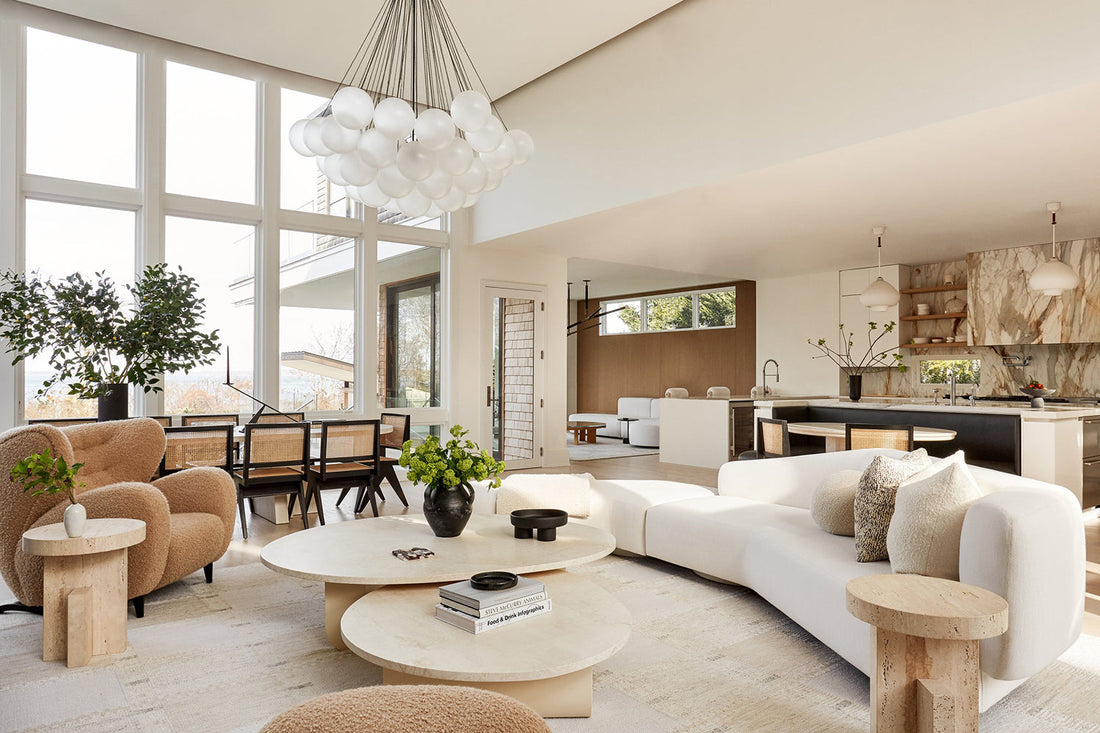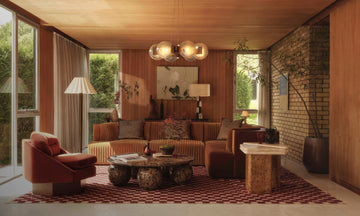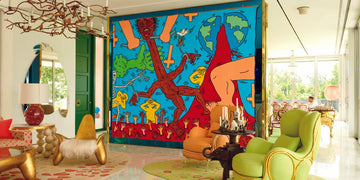
2025 Interior Trend Spotlight: Organic Modern – Sculptural Forms & Earthy Textures
1. What Is Organic Modern Design?
Organic Modern is a refined, serene aesthetic that fuses minimalist, architectural shapes with natural materials and warm, earthy tones. Originating as an evolution of Japandi and Biophilic design, it balances clean, modern silhouettes with tactile textures and natural hues for spaces that feel both contemporary and grounded
2. Why It’s a Top Interior Trend in 2025
-
Curved and sculptural furniture is dominating trends, adding visual flow and comfort to interiors
-
Earthy materials and textures—like reclaimed wood, stone, linen, jute, cork and vegan leather—are not just aesthetic but resonate with sustainability values
-
The trend supports well-being through biophilic design: integrating greenery, tactile surfaces, and daylight for mindful, calming environments

3. Core Elements of Organic Modern Interiors
• Sculptural Forms
Use rounded sofas, cylindrical coffee tables, and arch-shaped mirrors or ceilings to soften hard edges and introduce organic movement.
• Earthy Textures & Warm Neutrals
Feature Mocha Mousse (Pantone Color of the Year), warm browns, terracotta, stone grey, and creams paired with tactile materials like fluted wood, clay, and natural plaster
Wood drenching—covering walls or ceilings in wood tones—makes interiors deeply warm and inviting
• Natural Materials & Sustainability
Prioritize reclaimed wood, limestone, linen, jute, cork panels and eco-friendly leather substitutes to bring texture and environmental integrity to spaces

4. Room-by-Room Practical Tips
Living Room
-
Choose a sculptural sofa or rounded armchairs in boucle or linen.
-
Accent with a live-edge wood coffee table and linen-wrapped lighting fixtures.
-
Soften floors with jute or textured wool rugs.
Dining & Kitchen
-
Install fluted walnut or travertine dining tables with arched legs.
-
Use cork or matte stone backsplash, rattan seating, and curved pendants.
Bedroom
-
Opt for a low-profile platform bed in natural wood, dressed with linen bedding.
-
Accessorize with pebble-shaped lamps, ceramic vases, and subtle indoor greenery like eucalyptus.

5. Layered Styling for Depth & Visual Harmony
-
Color layering: warm neutral base (Mocha Mousse, taupe, stone) with sparse dark accents like charcoal or matte black for contrast. Use organic tones to build richness
-
Texture layering: Combine wood grains, woven textiles, smooth stone, and soft upholstery.
-
Contrast materials: Blend stone countertops with wood cabinetry, or clay pottery with steel or chrome details for visual punctuation

6. Designer Workflow: From Concept to Completion
-
Moodboard Foundations: Start with a warm neutral palette, then introduce sculptural furniture, layered textures, and live greenery.
-
Furniture Selection: Choose pieces with fluid lines—think curved sofas, round coffee tables, rounded-edge cabinetry.
-
Material Sourcing: Use reclaimed and sustainable finishes like live-edge wood, Venetian plaster, cork accents, and organic textiles.
-
Layout & Lighting: Emphasize natural light. Use pendant clusters and diffused sconces. Position seating near windows and layer soft area lighting.
-
Styling Touches: Use ceramic or stone accessories, organic art, draped linen textiles, and foliage to soften, balance, and humanize space.

8. Why Designers & Enthusiasts Love This Trend
-
Offers visual serenity—calm yet curated spaces.
-
Focuses on well-being and sensory richness through biophilic layering and material tactility.
-
Made for modern living—durable, sustainable, and timeless.
-
Versatile palette—works across urban lofts, family homes, and boutique hospitality.
Final Thoughts
Organic Modern in 2025 isn’t just an aesthetic—it’s a lifestyle choice that prioritizes comfort, human connection, and sustainability. For designers, this trend is a fertile ground for creativity—melding form, function, and nature in harmonious design. Whether you’re shaping a boutique hotel or refining a cozy studio, this aesthetic creates spaces that feel intentional, sensory, and undeniably grounded.







comments